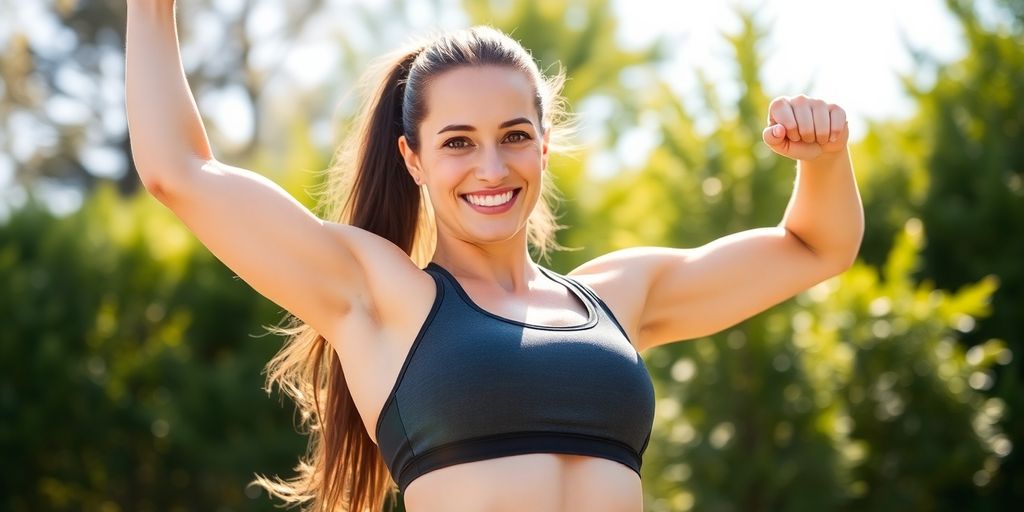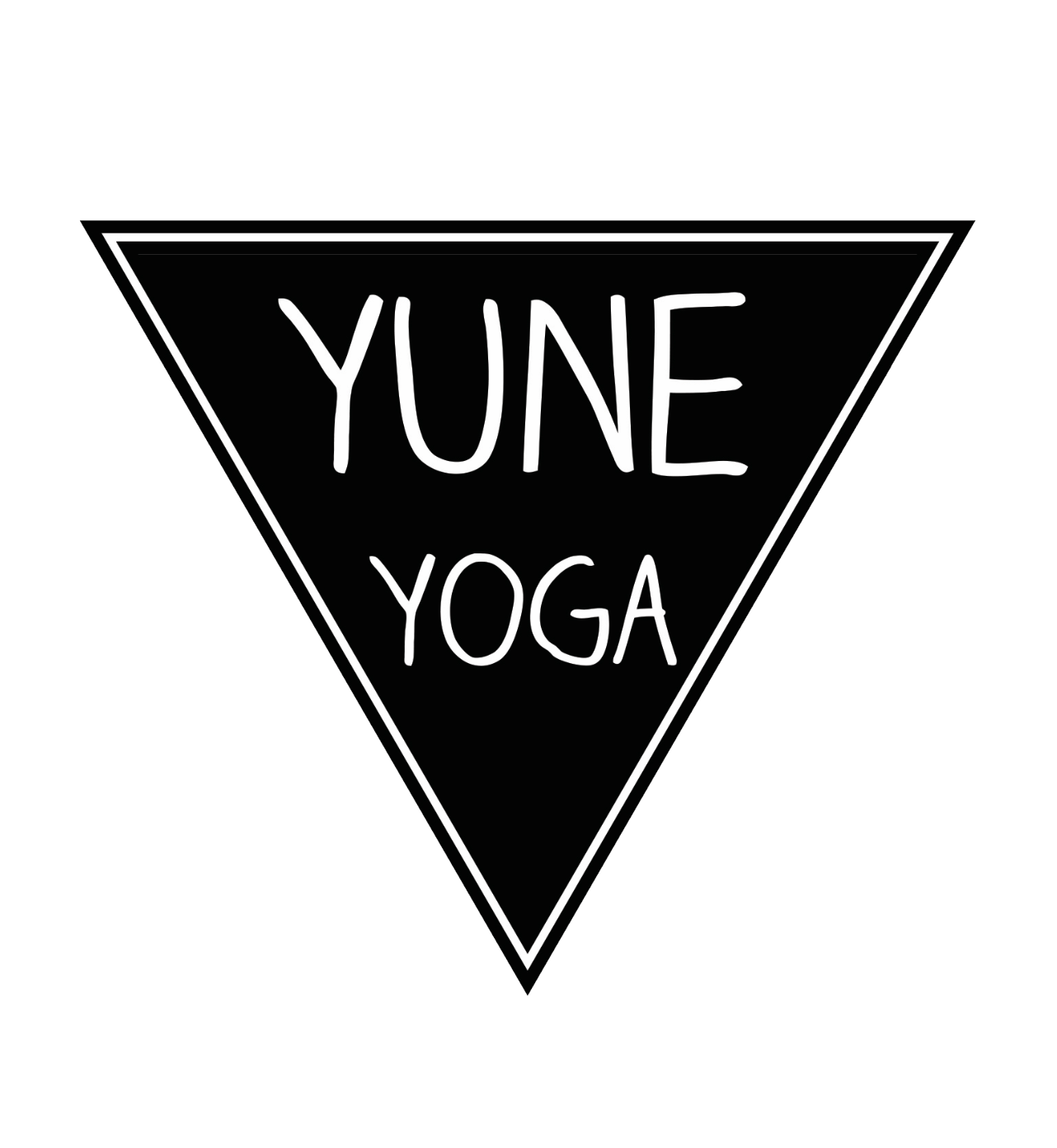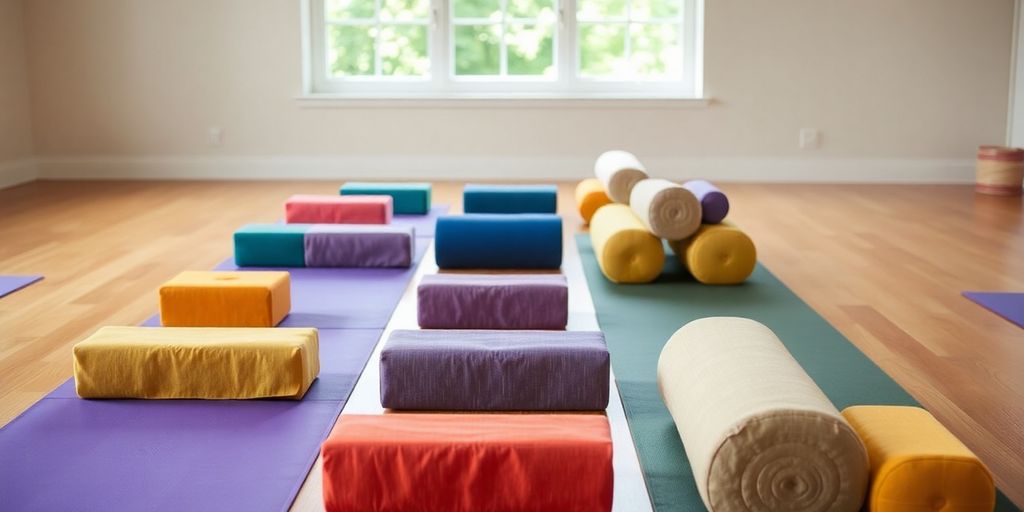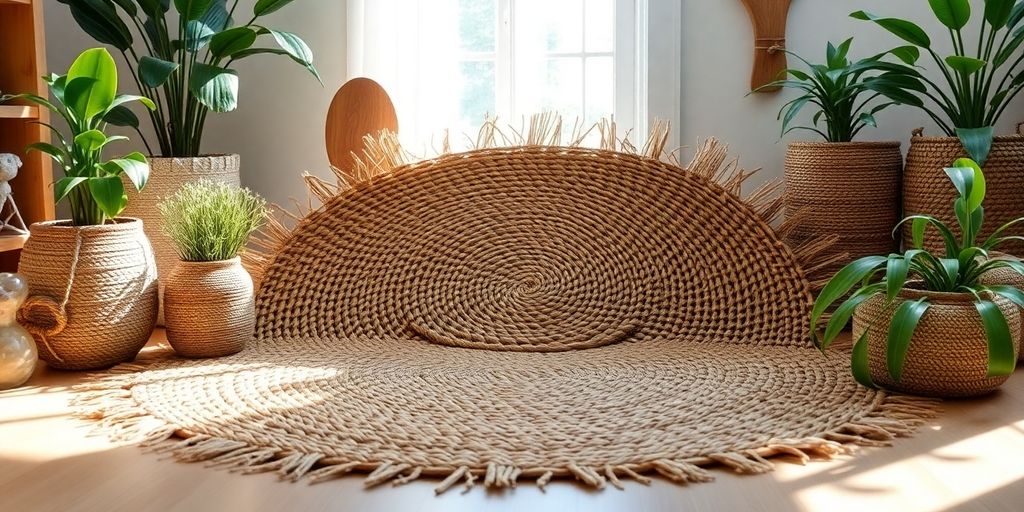
Effective Flabby Arm Exercises Without Weights for a Toned Look
If you're looking to tone up those arms without hitting the gym or lifting weights, you're in the right place. Many people struggle with flabby arms, especially as they age or after weight loss. The good news is, you can achieve a more toned look right at home using just your body weight. In this article, we’ll dive into effective flabby arm exercises without weights, perfect for anyone short on time or equipment. Let’s get started!
Key Takeaways
- Bodyweight exercises can effectively tone your arms without the need for weights.
- Warm-up is crucial to avoid injuries and prepare your muscles for exercise.
- Incorporating cardio can enhance the effectiveness of your arm workouts.
- Consistency is key; aim for regular workouts to see results over time.
- Nutrition plays a significant role in muscle recovery and overall toning.
Understanding Flabby Arm Exercises Without Weights
Benefits of Bodyweight Exercises
Bodyweight exercises are great because you can do them anywhere, anytime. No gym? No problem! They're super convenient and can be easily fit into a busy schedule. Plus, they're a good starting point if you're new to fitness. You can modify them to match your current strength level. Bodyweight exercises like arm circles can help you get the job done anytime, anywhere.
- Convenience: Workout anywhere.
- Scalability: Adjust to your fitness level.
- Cost-effective: No equipment needed.
Target Muscles for Toning
When aiming to tone your arms without weights, it's important to know which muscles to focus on. We're talking biceps, triceps, and shoulders. Biceps get a lot of attention, but don't forget the triceps – they make up a bigger part of your upper arm! Shoulders help with overall arm shape and definition. Hitting all these areas will give you a more balanced and toned look. It's worth noting that the back and biceps muscles are difficult to train without additional equipment.
Common Misconceptions
One big misconception is that bodyweight exercises alone will give you huge, bulging muscles. While they can definitely tone and strengthen, building significant muscle mass usually requires added resistance. Also, some people think you can spot-reduce fat. Unfortunately, that's not how it works. You can't just target arm fat with exercises. Overall fat loss combined with arm exercises is the key. Bodyweight arm exercises are good for beginners and those who can’t access equipment.
Bodyweight exercises are a fantastic starting point, but they might not be enough if you're aiming for serious muscle growth. It's more about consistent effort and a balanced approach to fitness and diet.
Essential Warm-Up Techniques
Before diving into any arm workout, it's super important to warm up properly. Think of it like prepping your muscles for the main event – you wouldn't just jump into a race without stretching, right? Warming up increases blood flow, improves flexibility, and reduces the risk of injury. Plus, it helps you get more out of your workout by allowing your muscles to work more efficiently.
Dynamic Stretching for Arms
Dynamic stretching involves movement, unlike static stretching where you hold a position. For arms, this could include arm circles, shoulder rotations, and arm swings. These movements help to gently increase your range of motion and prepare your muscles for the exercises ahead. I usually do each of these for about 30 seconds to a minute.
Here's a quick routine I like to follow:
- Arm Circles: Start with small circles, gradually increasing the size. Do forward and backward circles.
- Shoulder Rotations: Rotate your shoulders forward and backward, feeling the stretch in your upper back and shoulders.
- Arm Swings: Swing your arms across your body and then out to the sides, opening up your chest and shoulders.
Importance of Warm-Up
Skipping the warm-up is like driving a car without letting the engine heat up – it might work, but it's not good for the long run. A proper warm-up not only reduces the risk of strains and sprains but also improves your performance. Warming up prepares your nervous system for the workout, improving muscle activation and coordination. It's a small investment of time that pays off big in terms of injury prevention and workout effectiveness. Think of it as athletic performance insurance.
How to Prepare Your Body
Beyond dynamic stretching, there are a few other things you can do to prepare your body for an arm workout. Start with some light cardio, like jumping jacks or high knees, to get your heart rate up. This helps to increase blood flow to your muscles and get them ready for action. Also, make sure you're properly hydrated – dehydration can lead to muscle cramps and fatigue. I usually drink a glass of water about 30 minutes before I start working out.
A good warm-up should leave you feeling slightly warmer and more mobile, but not fatigued. It's about preparing your body, not exhausting it. Listen to your body and adjust the warm-up to suit your needs. If something feels painful, stop immediately.
Effective Flabby Arm Exercises Without Weights
So, you want to tone those arms without hitting the gym? Awesome! You don't need fancy equipment to get results. Bodyweight exercises are surprisingly effective, and you can do them just about anywhere. Let's dive into some great options.
Arm Circles for Toning
Arm circles are a classic for a reason. They're simple, but they work your biceps, triceps, and shoulders. You can do them standing or sitting, making them super accessible. Here's how:
- Extend your arms straight out to the sides.
- Make small, controlled circles forward for about 30 seconds.
- Then, reverse the direction and circle backward for another 30 seconds.
- Repeat this for 2-3 sets. You should feel the burn!
Push-Ups Variations
Push-ups are a fantastic compound exercise, meaning they work multiple muscle groups at once. And there are tons of variations to keep things interesting and challenge yourself as you get stronger. If regular push-ups are too tough, start with incline push-ups (hands on a raised surface) or knee push-ups. As you get stronger, try decline push-ups (feet on a raised surface) for an extra challenge. Push-ups are great for arm strengthening.
Tricep Dips Using a Chair
Tricep dips are amazing for targeting the back of your arms. All you need is a sturdy chair or bench. Here's how to do them:
- Sit on the edge of the chair and place your hands on the edge, shoulder-width apart.
- Slide your butt off the chair, keeping your arms straight.
- Lower your body by bending your elbows until your upper arms are parallel to the floor.
- Push back up to the starting position.
- Aim for 3 sets of 10-15 reps. If you want to make it harder, extend your legs further out. If you want to make it easier, keep your feet closer to the chair.
Remember, consistency is key. Doing these exercises regularly will help you see results over time. Don't get discouraged if you don't see changes overnight. Just keep at it, and you'll get there!
Incorporating Cardio for Better Results
Okay, so you're doing the arm exercises, which is great! But let's be real, if you really want to see those arms toned, you gotta add some cardio into the mix. Think of it as turning up the heat on your fat-burning furnace. Cardio helps you shed overall body fat, which in turn makes those arm muscles more visible. It's like revealing the sculpture underneath the clay, you know?
High-Intensity Interval Training
HIIT is your friend. Seriously. It's quick, it's effective, and it doesn't require a ton of equipment. The basic idea is short bursts of intense exercise followed by brief recovery periods. For example:
- 30 seconds of burpees
- 15 seconds of rest
- 30 seconds of mountain climbers
- 15 seconds of rest
- Repeat for 15-20 minutes
HIIT is great because it keeps your metabolism revved up even after you're done working out. Plus, it's a great way to lose weight and improve your cardiovascular health at the same time.
Jump Rope for Arm Engagement
Don't underestimate the power of a jump rope! It's not just for kids on the playground. Jumping rope is a fantastic cardio workout that also engages your arms and shoulders. The constant rotation and stabilization work those muscles in a subtle but effective way. Try incorporating jump rope intervals into your routine. Aim for 30-60 second intervals with short rest periods in between.
Shadow Boxing Techniques
Shadow boxing is another awesome way to get your heart rate up while also working your arms and shoulders. It's like a dance, but with punches! You can throw jabs, crosses, hooks, and uppercuts, focusing on proper form and technique. This not only burns calories but also helps to tone and define your arm muscles. Plus, it's a great stress reliever! Try shadow boxing for 3-5 minute rounds with a minute of rest in between. You can even add light dumbbells to increase the intensity.
Cool Down and Stretching Routines

Static Stretching for Arms
After working those arms, it's super important to cool down properly. Static stretching involves holding a stretch for a period, usually around 30 seconds. This helps to improve flexibility and reduce muscle soreness. Think about stretches like holding your arm across your body to stretch your shoulder, or gently pulling your elbow behind your head to stretch your triceps. Don't bounce, just ease into the stretch and hold it. It's a great way to prevent injury and improve your range of motion. I usually do these while watching TV, it's a nice way to unwind.
Breathing Exercises
Don't underestimate the power of breathing! Deep breathing exercises can really help your body recover after a workout. They help to lower your heart rate and blood pressure, and they can also reduce stress. Try some simple techniques like box breathing (inhale for 4 seconds, hold for 4 seconds, exhale for 4 seconds, hold for 4 seconds, repeat) or diaphragmatic breathing (belly breathing). I find that focusing on my breath helps me to relax and clear my head after a tough workout. It's like a mini-meditation session.
Importance of Recovery
Recovery is just as important as the workout itself. It's when your muscles repair and rebuild, becoming stronger than before. Skipping the cool down and stretching can lead to muscle soreness, stiffness, and even injury. Make sure you're giving your body the time it needs to recover. Listen to your body, and don't push yourself too hard. Proper recovery also includes getting enough sleep and eating a healthy diet. Think of it as investing in your future workouts. You can use recovery guides to help you with this.
I used to skip cool downs all the time, thinking I was saving time. But then I started getting injured more often, and my muscles were always sore. Now, I never skip the cool down and stretching. It's made a huge difference in how my body feels and how well I can perform during my workouts.
Creating a Consistent Workout Schedule

Frequency of Workouts
Okay, so you're pumped to get rid of those flabby arms. Awesome! But how often should you actually be working out? It's a pretty common question. Aiming for consistency is way more important than just smashing yourself every single day. Think about it like this: your muscles need time to recover and rebuild. I usually suggest starting with 3-4 days a week, focusing on those arm exercises. You can always adjust as you get stronger and more comfortable. Listen to your body – if you're super sore, take a rest day!
Balancing Arm Exercises with Other Workouts
Don't be that person who only does arm workouts, alright? It's all about balance. While targeting your arms is great, you need to incorporate other exercises too. Think legs, core, back – the whole shebang. This not only helps you avoid muscle imbalances but also boosts your overall fitness level. Plus, compound exercises like squats and lunges actually help burn more calories, which contributes to reducing overall body fat (including arm fat!).
Here's a sample weekly schedule:
| Day | Workout |
|---|---|
| Monday | Arm exercises (triceps dips, push-ups) |
| Tuesday | Cardio (HIIT, jump rope) |
| Wednesday | Rest |
| Thursday | Leg day (squats, lunges) |
| Friday | Arm exercises (arm circles, planks) |
| Saturday | Core (crunches, planks) |
| Sunday | Rest or active recovery (yoga, walking) |
Tracking Your Progress
Seriously, track your progress! It's so motivating to see how far you've come. I use a simple notebook, but there are tons of apps out there too. Write down the number of reps you do, how many sets, and how you felt during the workout. Also, take pictures! It's sometimes hard to notice changes in the mirror, but progress photos can be a real eye-opener. Don't get discouraged if you don't see results right away. Just keep at it, and you'll get there. Remember to adjust your routine as you get stronger. If those push-ups are getting too easy, try a harder variation. Keep challenging yourself to see continuous improvement. It's a marathon, not a sprint!
It's easy to get caught up in the excitement of starting a new workout routine, but remember that consistency is key. Don't try to do too much too soon, or you'll risk burnout or injury. Start slow, gradually increase the intensity and duration of your workouts, and most importantly, listen to your body. If you're feeling pain, stop and rest. Building toned arms takes time and effort, but with a consistent workout schedule and a healthy diet, you can achieve your goals.
Nutrition Tips for Toned Arms
Importance of Protein Intake
Okay, so you're doing all these arm exercises, which is great! But here's the thing: you can't build muscle out of thin air. Protein is absolutely key. It's the building block your muscles need to repair and grow after you work them. Think of it like this: you're tearing down the old structure (your muscles) during exercise, and protein is the new brick and mortar to rebuild it stronger. Aim for a good source of protein with every meal. It doesn't have to be a huge steak every time; Greek yogurt, eggs, beans, or even a handful of nuts can do the trick.
Hydration and Muscle Recovery
Water, water, everywhere! Seriously, don't underestimate the power of staying hydrated. When you're working out, your muscles lose water through sweat. Dehydration can lead to muscle cramps, fatigue, and just an overall sluggish feeling. Plus, water helps transport nutrients to your muscles, which is important for recovery. Keep a water bottle handy and sip on it throughout the day, especially before, during, and after your workouts. Consider electrolyte drinks if you're sweating a lot.
Foods to Support Muscle Growth
It's not just about protein; it's about a balanced diet. You need a mix of nutrients to fuel your workouts and help your muscles recover. Think of it as giving your body the right tools for the job. Here's a quick rundown:
- Lean Protein: Chicken, fish, tofu, beans.
- Complex Carbs: Brown rice, quinoa, sweet potatoes (for energy!).
- Healthy Fats: Avocado, nuts, olive oil (for overall health and hormone production).
Don't fall into the trap of thinking you need to drastically cut calories to get toned arms. It's more about making smart food choices and fueling your body properly. Starving yourself will only lead to muscle loss, which is the opposite of what you want. Focus on whole, unprocessed foods, and listen to your body's hunger cues. Remember, it's a marathon, not a sprint! And don't forget to check out some weight-free exercises to get started!
Wrapping It Up
So there you have it! You don’t need weights to get those arms looking toned. Just a bit of time and some simple bodyweight exercises can make a big difference. Whether it’s arm circles, push-ups, or planks, you can do these anywhere, anytime. Remember, consistency is key. Stick with it, and you’ll see results before you know it. No fancy gym memberships or equipment needed—just you and your determination. Now, go ahead and give those exercises a try!
Frequently Asked Questions
What are flabby arms?
Flabby arms refer to arms that have excess fat and loose skin, often making them look less toned.
Can I tone my arms without weights?
Yes! You can use bodyweight exercises like push-ups, arm circles, and tricep dips to tone your arms without any weights.
How often should I do arm exercises?
It's best to do arm exercises 2 to 3 times a week, allowing rest days in between for recovery.
What muscles do arm exercises target?
Arm exercises mainly target the biceps, triceps, and shoulders, helping to strengthen and tone these areas.
Do I need to do cardio for toned arms?
Yes, incorporating cardio can help burn fat and improve overall fitness, which can enhance the appearance of toned arms.
What should I eat to help tone my arms?
Eating a balanced diet with enough protein, fruits, vegetables, and staying hydrated can support muscle recovery and growth.


